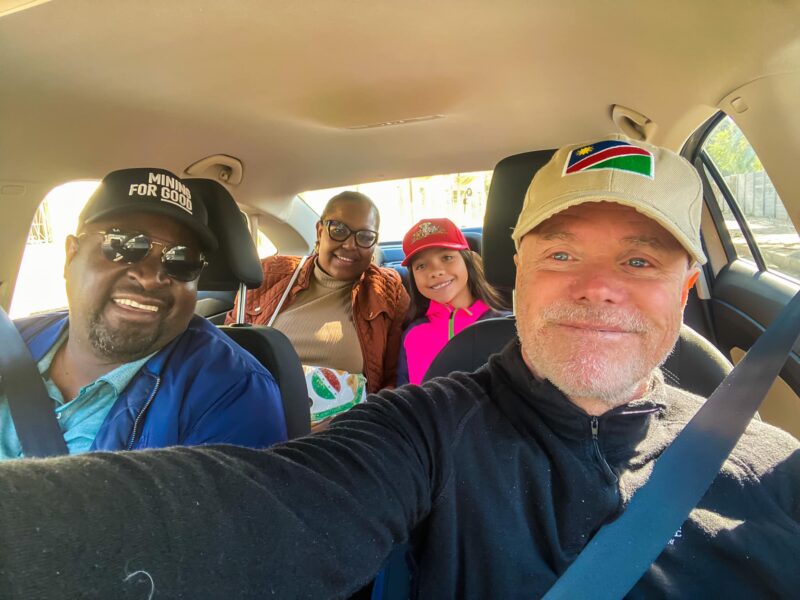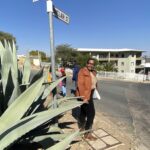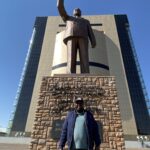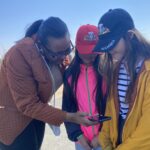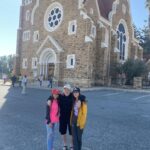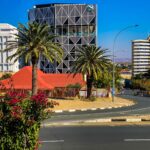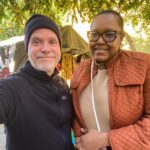We had a wonderful morning yesterday. The wonderful Cornelia and her husband came to the hotel, picked us up and took us on a tour of downtown Windhoek. What a beautiful capital! Tiny, not so much people, that said it was a Sunday, clean and picturesque.
We have been holed up in our shade courtyard at Klein Windhoek Guest House since we came. So many details to fix, sort out and on top of that, girls just finished school so they’re very tired I see. Me too after the huge workload put in to getting all this onboard the past month. On Wednesday we will head west towards Walvis Bay.
Cornelia wrote me a few years ago on the subject of the famed Swedish explorer Charles John Andersson. I had written an article on the very interesting character Charles John, an Africa explorer, she found it during her extensive research and she asked me for some help. Let me shortly tell you about Charles John.
Andersson was born in Farmland, near my home state of Dalarna. Andersson was born on March 4, 1827, in Värmland, Sweden. He came from a wealthy family and received a good education, studying natural sciences and languages. His interest in exploration was sparked by the stories of Swedish explorer Adolf Erik Nordenskiöld, which motivated him to embark on his own adventures.
One of Andersson’s most notable achievements was his exploration of the interior of Namibia, which was largely uncharted by Europeans at the time. In 1851, he embarked on an expedition with his friend, Swedish naturalist Axel Wilhelm Eriksson. They traveled through the harsh and inhospitable terrain, encountering various challenges and dangers along the way. Their expedition resulted in the discovery of Lake Ngami, located in what is now Botswana, and opened up new routes for future European explorers.
Andersson’s explorations also included interactions with local tribes, such as the Ovambo and Herero people. He developed a deep respect for the local cultures and advocated for fair treatment and trade relations with the indigenous populations. His interactions and observations of the people he encountered provided valuable insights into the diverse societies of southern Africa.
Tragically, Charles John Andersson’s life was cut short at the age of 40. In 1867, he was killed in a conflict with the Ovambo people during an expedition in northern Namibia. Despite his untimely death, his contributions to the exploration and understanding of southern Africa remain significant and continue to be appreciated by researchers and historians to this day.
In those days, documentation of peoples life where at best sketchy. And a lot of the African stories where written by the perspective of white folks. Still today I see. Cornelia wrote to me because she and her family questioned the narrative as regards to what happened to Charles family when he died.
So, yesterday when we met she showed me a recent genetic test of her genes, which showed that 2% had a Swedish origin! She showed me photos of her grandmother who had blue eyes and was very light skinned. All very interesting! And she have spent years researching the subject. And Cornelia and her family want to rewrite Charles John’s story and give a new perspective, which I think is very important too. So I will try to help us much as I can after this trip.
Cornelia and her husband where such great company and the girls said afterwards they felt so loved and relaxed with them. Lots of laughter of course! I look forward to meeting them when we return and see if I can help them get recognition of a new perspective on the Charles John Andersson saga.
